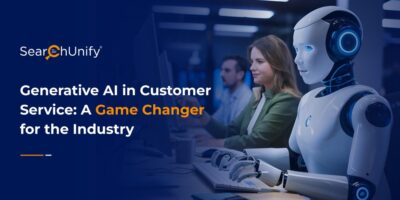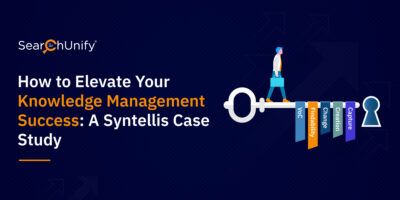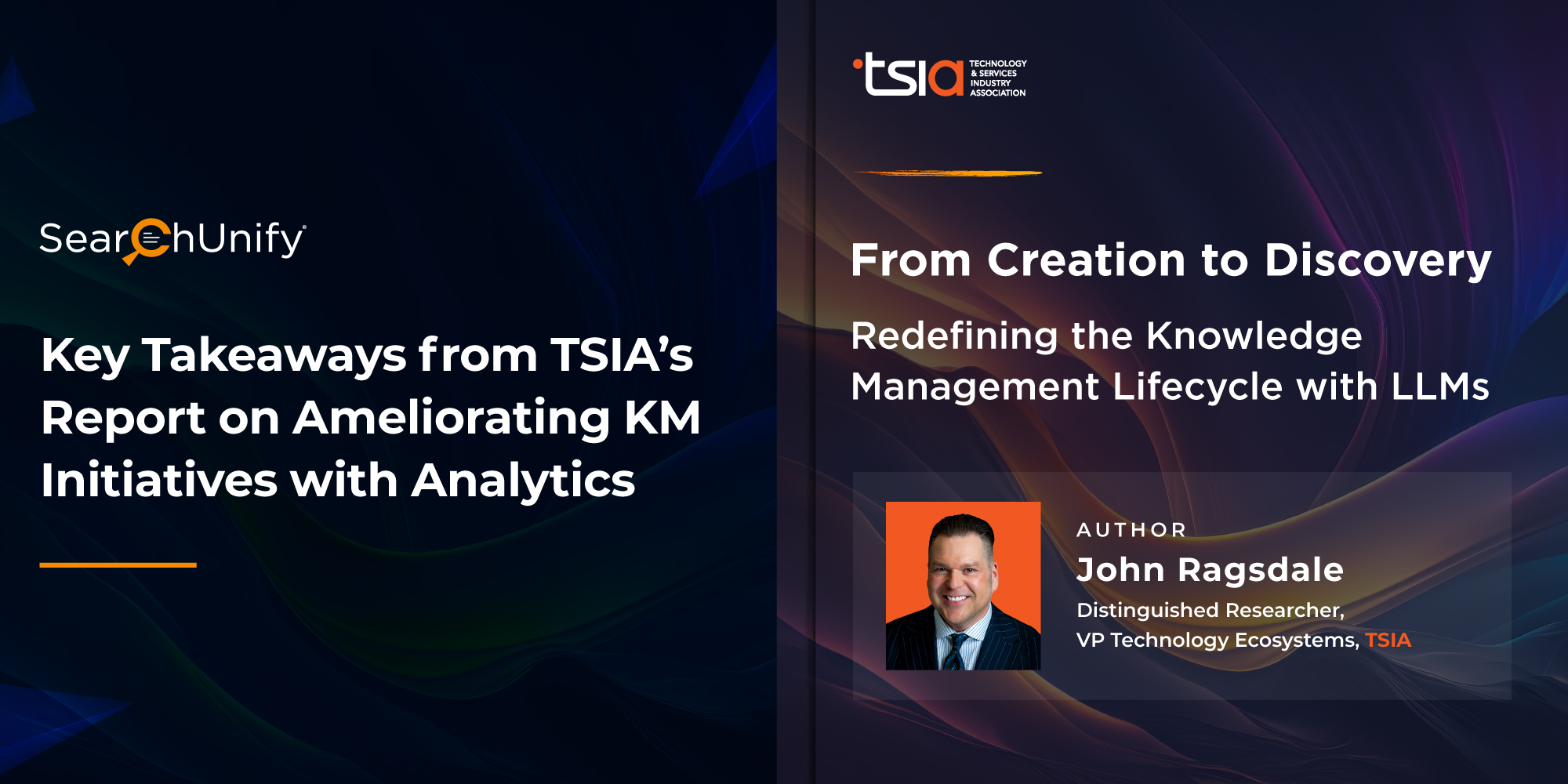
We are living in the information age, which makes knowledge one of the most potent weapons in a company’s arsenal. Seamless and timely access to relevant information can make or break a company’s ability to stay competitive.
Given the importance, organizations must manage their knowledge effectively. But there’s a problem. Despite a good start, most organizations fail to keep the progress curve going up. With the knowledge management lifecycle, you can see that curve skyrocket.
But how can firms improve the four crucial stages of the knowledge management lifecycle—creation, maintenance, findability, and gap analysis—for better KM? To answer these questions, TSIA has published a report that explains how to attain this KM nirvana.
Let’s take a quick look at the major points outlined in the report.
I. The TSIA Knowledge Maturity Model
With knowledge programs becoming mainstream all over the world, companies started looking for ways to assess the maturity of their KM practices. To help such firms, TSIA came up with the maturity model for knowledge management.
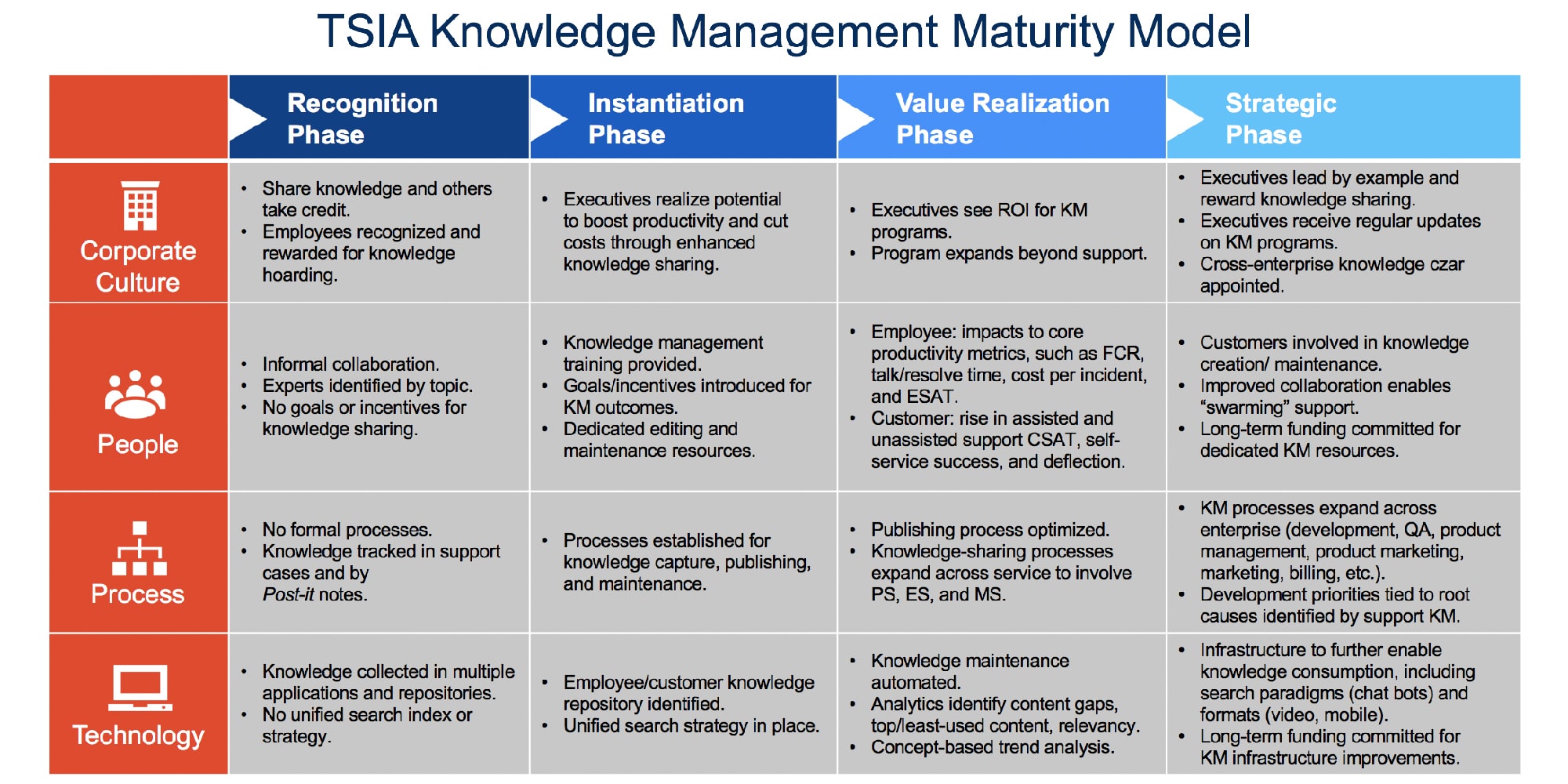
It uses four phases of maturity across people, process, technology, and corporate culture to enable enterprises to self-assess their KM strategy and identify ways to further improve knowledge sharing. Let’s take a closer look at what each phase encompasses:
- Recognition Phase: There are no formal programs, well-defined processes, or metrics in place specific to KM. Often employees are rewarded for being the only one with an answer, which indirectly promotes knowledge hoarding, not sharing.
- Instantiation Phase: Processes are identified to capture & share tacit knowledge. Repositories are identified and executives evaluate possible improvements in terms of quality, productivity, and cost if the program succeeds.
- Value Realization Phase: Once the tools and processes are in place, a measurable ROI is identified. Initial processes are optimized and interest in KM spreads beyond the core team.
- Strategic Phase: Collaboration and knowledge sharing become the norm paving the way for new approaches to staffing and organizational structures. KM processes extend throughout the firm and long-term commitments to infrastructure and staffing are provided.
II. Why KM Initiatives Derail
A recent TSIA’s Knowledge Management survey revealed that the majority of companies are still early in their journey to achieve mature knowledge management programs.
A total of 76% of companies are in the early two phases of KM maturity and are only just beginning their journey or are now understanding the potential of additional KM investments.
Only 8% of companies have achieved the strategic phase of KM maturity.
III. Driving KM with the Synergistic Duo of LLMs + Cognitive Technology
While navigating the vast realm of LLMs, it’s crucial to acknowledge their limitations. But here’s the thrilling scoop—enter cognitive technology, the rising star set to break these barriers and open up boundless possibilities in the dynamic world of knowledge management.
Are ready for a step-by-step exploration of how this transformative duo propels your KM lifecycle into an exhilarating leap toward success.
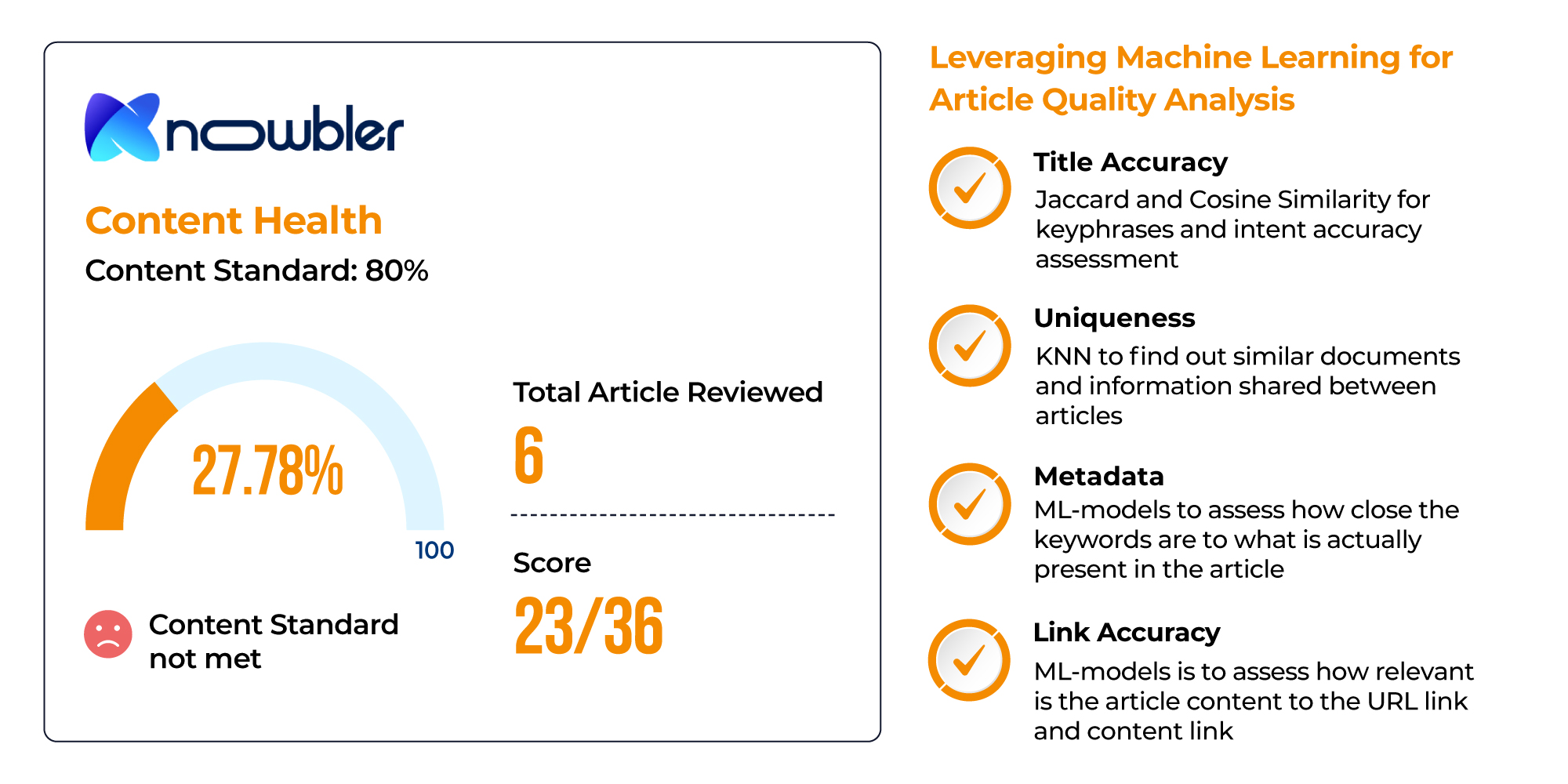
IV. Analytics for The Whole Organization
In the good old days, KM was primarily used for support operations. Businesses these days are leveraging the best KM practices across functions. Let’s see how:
- Updating outdated information
- Identifying knowledge gaps
- Analyzing content health
- Verifying the accuracy of knowledge
- Adding new insights or findings
- Organizing knowledge for efficient retrieval
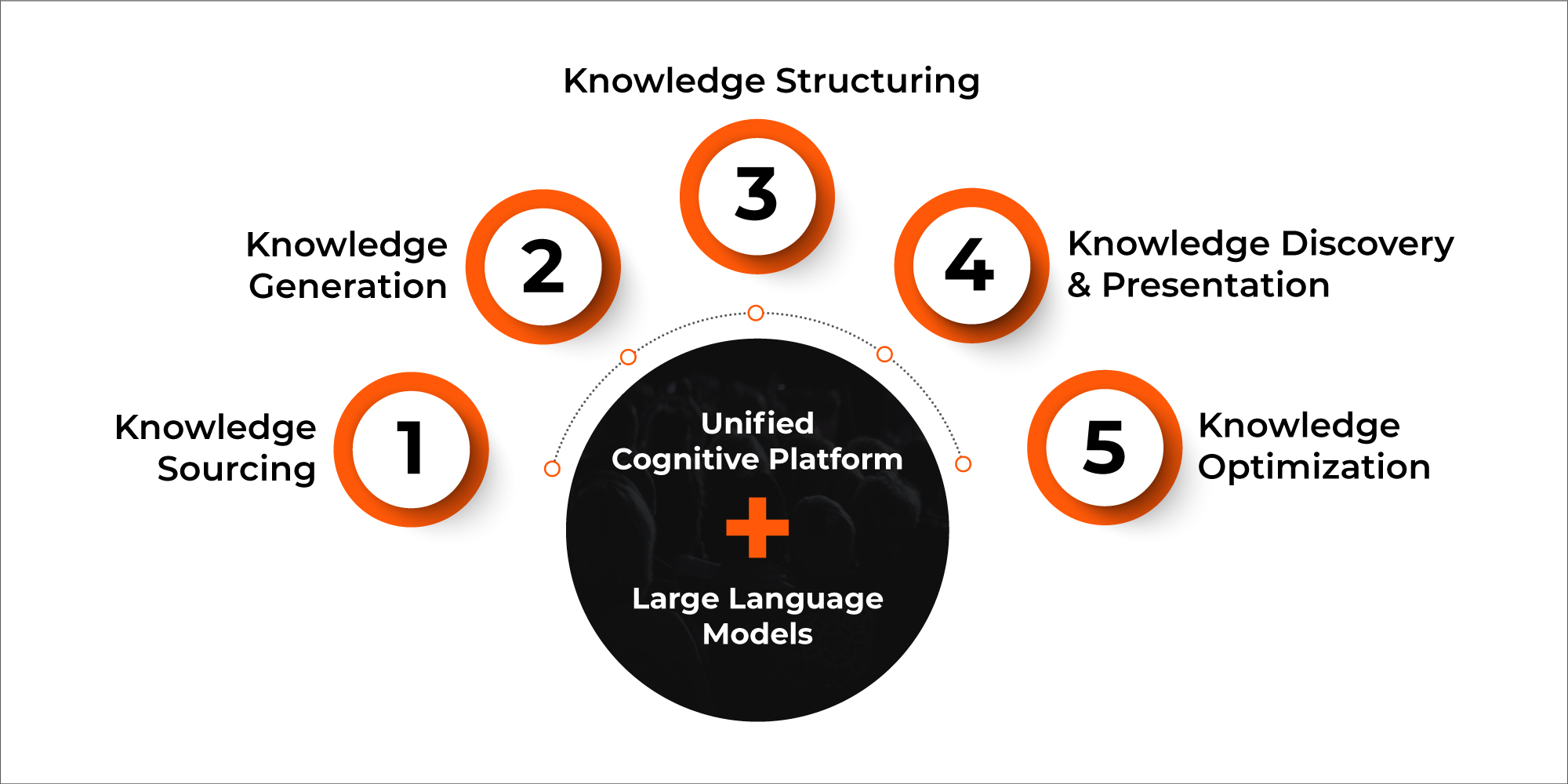
Reports to Keep An Eye On
Organizations are constantly looking for new ways to extract more data and turn it into data-backed decisions. And thanks to several modern solutions like cognitive search engines and SearchUnify’s Knowbler, teams can leverage a one-stop solution for all your knowledge management needs.
Would you like to know more about these search-powered insights engines and how they can help mature your KM process? Then take a look at the complete TSIA report here.
Also, join our list of happy customers and revolutionize the way you view KM! Take the Knowbler demo today!


